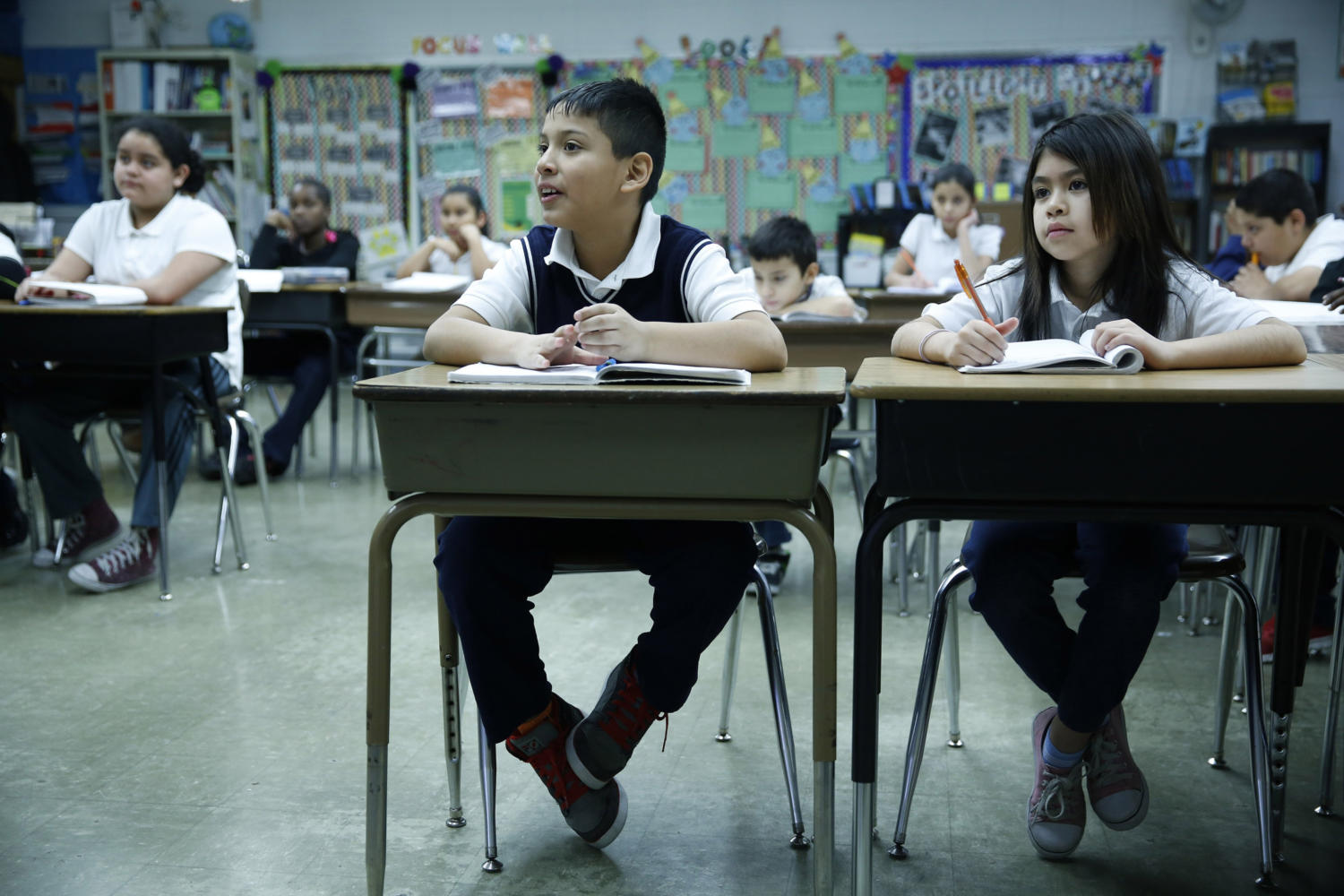Financial literacy standards underway in Illinois schools
Students work on their math in instructor Tasia Fields fourth grade classroom at Carman-Buckner Elementary School Jan. 22, 2016 in Waukegan, Ill. (Jose M. Osorio/Chicago Tribune/TNS)
August 28, 2017
Financial literacy skills, such as balancing a checkbook and putting money into a savings account, will be required to be taught in Illinois schools this year.
In 2015, the Illinois State Board of Education adopted revised social science standards that include financial literacy throughout elementary, middle and high school.
Those standards were approved in February 2016 and take effect this school year.
Advertisement
Adding financial literacy into the standards was a joint initiative by the Illinois Treasurer’s Office, nonprofit Econ Illinois and Illinois Department of Financial and Professional Regulation.
Supporters say raising the level of financial proficiency will help improve the economic strength of the state.
Around 1.8 million Illinoisans, or 38 percent of households, are liquid asset poor, meaning that they do not have enough savings to live above the poverty level for just three months if they lose a job, face a medical crisis or suffer another income disruption.
“When individuals are provided a financial literacy foundation, they are more inclined to make educated personal finance decisions that lead to wealth accumulation,” said Bryan Schneider, IDFPR secretary, in a statement.
The groups rolled out the effort with the help of the Illinois Association of Regional School Superintendents.
Jeff Vose, former president of the IARSS and regional superintendent for Sangamon and Menard counties, said incorporating financial literacy should help students be successful in the future.
“In a time where students and young teachers are consumed in student loan debt and financial debt, and as our state is in a fiscal crisis, it only makes sense our citizens are equipped and prepared to deal with financial hardships in their life,” he said.
Advertisement*
According to Nancy Harrison, president and executive director of Econ Illinois, the standards start with very basic concepts at the elementary level and build from there.
For example, elementary students will learn basic concepts like choosing to save money versus spending cash.
As students get older, they will learn about advantages of putting money into a bank, having a good credit score and about investment options, such as mutual funds or riskier options like individual stocks, she said.
Econ Illinois, she added, is providing teachers with resources and training opportunities on how to incorporate financial literacy into the classroom.
“We’re filling in the blanks for teachers,” Harrison said.
Harrison said it varies from school to school on what components of financial literacy already were being taught before this school year.
At Glenwood High School in Chatham, business and consumer education teacher Vonda Jenkins said students already are taught financial literacy, so she didn’t expect much to change. It was unclear how the changes would affect the Springfield School District.
Illinois is one of 45 states that includes financial literacy into standards.
___
(c)2017 The State Journal-Register, Springfield, Ill.
Visit The State Journal-Register, Springfield, Ill. at www.sj-r.com
Distributed by Tribune Content Agency, LLC.
Advertisement








